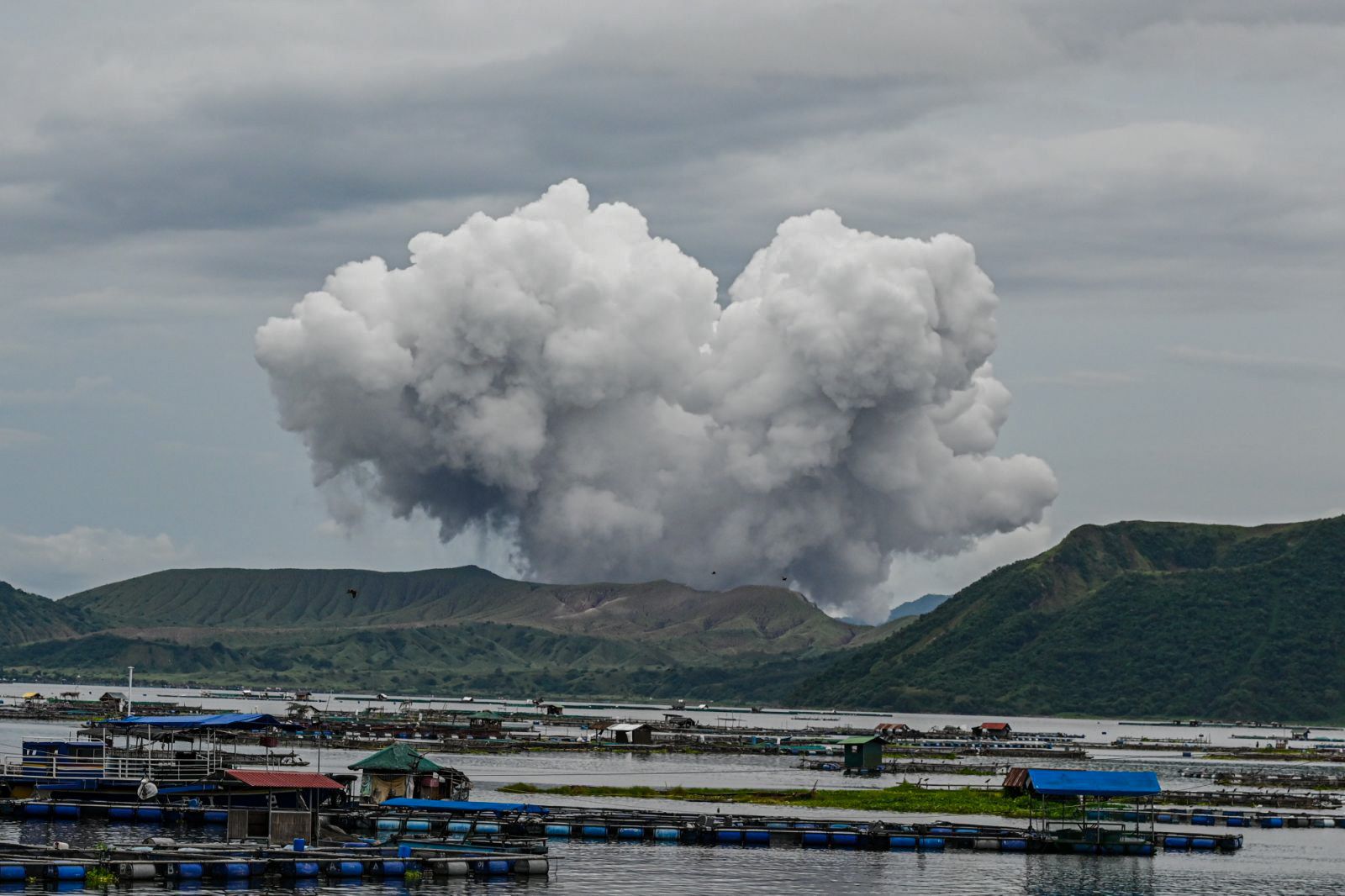Title: “The Hidden Volcano Beneath Laguna de Bay: Is the Philippines Facing a Double Eruption Disaster?”
For centuries, Laguna de Bay has been known as a place of tranquility—a vast, mirror-like lake that provides livelihood, beauty, and calm to the people of Luzon. But beneath its serene surface, a dark and fiery secret may be stirring—a hidden volcano that scientists believe could awaken, and when it does, the Philippines might face one of the most catastrophic natural events in its history.
A Sleeping Giant Beneath the Lake
It began with a series of small, almost unnoticeable tremors recorded around the lake’s western and southern rims. At first, the Philippine Institute of Volcanology and Seismology (PHIVOLCS) dismissed them as ordinary tectonic activity. But when fishermen reported seeing strange bubbles and faint columns of steam rising from the middle of the lake, experts started paying attention.
Dr. Michael Arriola, a leading volcanologist, recalls the moment his team realized something was wrong.
“When we looked at the seismic data, we saw patterns that didn’t match typical fault movement. It looked like magma trying to rise,” he said in an interview.
Satellite thermal imaging confirmed unusual heat signatures deep beneath the lake bed. The data suggested that a magma chamber—massive and ancient—lay dormant below Laguna de Bay. This discovery shocked the scientific community, because no one had ever classified the area as volcanic.
An Ancient Mystery Resurfaces
Historical records from the 1600s mention stories told by indigenous people of “fire under the great lake.” Spanish friars at the time dismissed them as myths. But new geological analysis of sediment samples revealed layers of volcanic ash consistent with past eruptions—ones that could not have come solely from Taal.
Archaeologist Dr. Liza Mendoza found similar clues during an excavation in Bay, Laguna:
“The soil showed evidence of at least two ancient explosions—older than any recorded eruption of Taal. It suggests that something powerful once erupted near or under the lake.”
Could the “something” be a massive volcano lying directly beneath the water?
The Possible Connection to Taal
PHIVOLCS recently discovered that underground magma channels may connect Laguna de Bay’s suspected volcanic system with Taal Volcano in Batangas. This means that pressure building in one could affect the other.
“If Taal experiences unrest,” Dr. Arriola explained, “it could trigger movement beneath Laguna de Bay—and vice versa. It’s a dangerous chain reaction we are only beginning to understand.”
Recent GPS data even shows that parts of southern Laguna are subtly uplifting—rising several millimeters each year. Combined with the lake’s increasing temperature and the surge in localized earthquakes, these signs point to underground magma movement.

Local Panic and Strange Phenomena
Residents around Los Baños, Calamba, and Binangonan have started noticing unusual signs: dead fish washing ashore, sudden drops in water level, and a faint sulfuric smell in the air during early mornings.
A fisherman named Jun told reporters,
“There are days when the water feels warmer than usual. One time, we saw the surface bubbling near the middle of the lake. It scared us—we thought the lake was boiling.”
Authorities have urged calm, but online rumors have exploded. Some posts claim to show strange glowing lights under the water at night. Others report that birds and animals have begun fleeing the area.
The Government’s Response
In late September, the Department of Science and Technology quietly initiated “Project Silencio”—a multi-agency effort to study the lake’s seismic and thermal activity. Drone mapping, sonar scans, and underwater robotics are being deployed to build a 3D model of what lies beneath.
Unofficial reports leaked to local media suggest that the team found a massive caldera structure—20 kilometers wide—beneath the lake bed. If true, this could mean that the entire Laguna de Bay basin is part of an ancient supervolcano.
Government officials, however, are treading carefully. Publicly confirming such a discovery could spark mass panic, especially in densely populated areas like Taguig, Muntinlupa, and Rizal, which all lie within potential impact zones.
What Could Happen If It Erupts?
Experts warn that if the hidden volcano were to awaken, the consequences would be devastating. A phreatomagmatic eruption—where magma meets water—could cause an explosion powerful enough to vaporize parts of the lake. Massive tsunamis could sweep into Metro Manila within minutes.
Dr. Arriola paints a chilling scenario:
“Imagine the energy of Taal multiplied by ten, happening right next to the capital. The ash could darken the sky for days. Millions would be displaced. It’s a worst-case scenario we hope never happens—but we must prepare for it.”
Taal and Laguna: A Deadly Duo?
The greatest fear among scientists is the possibility of a “twin eruption.” If pressure beneath both Taal and Laguna builds simultaneously, the two systems could trigger each other. Some researchers believe the current activity at Taal—its intermittent gas emissions and tremors—might already be influencing the underground chambers beneath Laguna de Bay.
A recent simulation by the University of the Philippines showed that a dual eruption could blanket nearly the entire Southern Tagalog region in thick ash within 12 hours. The winds would carry debris as far north as Bulacan and Pampanga.
A Race Against Time
Despite the mounting evidence, funding for further research remains limited. Dr. Mendoza warns that the window to act is closing.
“The data is there, the signs are there. But we’re moving too slowly. We cannot afford to wait until it’s too late.”
Local governments have begun quiet evacuation drills, disguised as “disaster preparedness exercises.” Behind closed doors, mayors of nearby towns are coordinating emergency plans with national agencies.
But for millions living near the lake, life goes on as usual—unaware that beneath their homes lies a ticking geological time bomb.
Conclusion: Calm Before the Storm
Tonight, as the sun sets over Laguna de Bay, the lake looks peaceful—golden reflections dancing across its surface. Children play by the shore. Fishermen cast their nets.
But deep below, the earth stirs. Pressure builds. The giant sleeps, but not forever.
And when it wakes, the world will remember that beneath even the calmest waters, danger can hide for centuries—until the day it decides to rise again.







